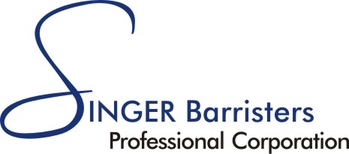A decision by the Toronto police to stop attending minor crashes could make it easier for parties to deny fault and liability — raising barriers for people who are hurt in an accident, personal injury lawyer Darryl Singer tells AdvocateDaily.com. WATCH CityNews.
“What appears to be a minor accident may result in injuries that are anything but minor,” says Singer, principal of Singer Barristers Professional Corporation in Toronto.
Facing an increasing volume of minor collisions, the Toronto Police Service announced Tuesday it would stop investigating when the combined damage is less than $2,000.
Traffic officers say about 70 per cent of all crashes are minor, and the current model is “no longer sustainable,” the Toronto Sun reports. The new hands-off approach is expected to begin next week.
Singer, who represents people who have been hurt in motor vehicle accidents, says the move could lead to problems for individuals who are injured in so-called minor crashes.
“If you are injured in an accident, you cannot sue the other party unless they are at fault,” he says.
“Without a police officer at the scene, it will be easier for the potentially at-fault party’s insurer to defend on the basis that their insured was not actually at fault.”
Singer adds that many minor accidents involve violations of the Highway Traffic Act, such as failing to yield, improper turns and improper lane changes.
“When police attend the scene and determine this to have been the case they will issue a ticket to one of the parties,” Singer says. “If they do not attend, this may open the door for the responsible party to concoct a story to deny liability.”
Singer says he often sees long-term health issues come as a result of crashes that were once believed to be minor.
“Often the body and mind are in a state of shock at the accident scene,” he says. “Unless there are broken bones, you may not realize that you have suffered injuries that will linger for months or even years.”
Soft tissue injuries to the neck and spine may appear to be minor but are often the “most insidious,” he says.
“While broken bones will generally heal, soft tissue injuries often result in chronic physical pain, and the effect of this quite frequently leads to depression and anxiety. So you may not decide until weeks or even months post-accident that you have injuries sufficient to warrant a lawsuit,” he says.
If there is no police report, drivers need to take proactive steps at the scene of an accident, he says. Singer provides the following tips on his blog:
1) Obtain the other driver’s licence and insurance information. Simply take a photo of the driver’s licence and pink slip.
2) Make a note of or photograph the make, model and licence plate of the vehicle.
3) Take photographs of any damage on both vehicles. Include any part that is detached and is lying on the road.
4) Obtain names and telephone numbers of witnesses.
5) If you feel any pain at all on the day of the accident or within several days or weeks thereafter, immediately attend at your family doctor, emergency room, or walk-in clinic, to document the injuries. Make sure to tell the doctor the details of the accident and how these injuries arose.
6) Contact your insurance company and provide them all the details, including details of any injuries, so there is a written record of the accident.
7) Write a detailed account of how the accident occurred and what injuries you have. Make notes about whether you were wearing a seatbelt, had anything to drink, if you were using a cell phone at the time, the weather, when you first saw the other vehicle, and any other details of the accident and your injuries.
8) Make a note of any conversation you had with the other driver.
9) If your injuries are ongoing, keep a regular daily or weekly journal of the nature and progress of your injuries, including your daily pain on a scale of 1 to 10; a list of tasks you need help with; whether or not you missed work or other events; and whether or not (and how) your pain affects your relationship with those closest to you.
“By taking the appropriate steps at the time the event occurs, you will enhance your credibility in the context of the lawsuit, and increase the likelihood that a lawyer can settle or win your case,” Singer says.
View article on AdvocateDaily.com
